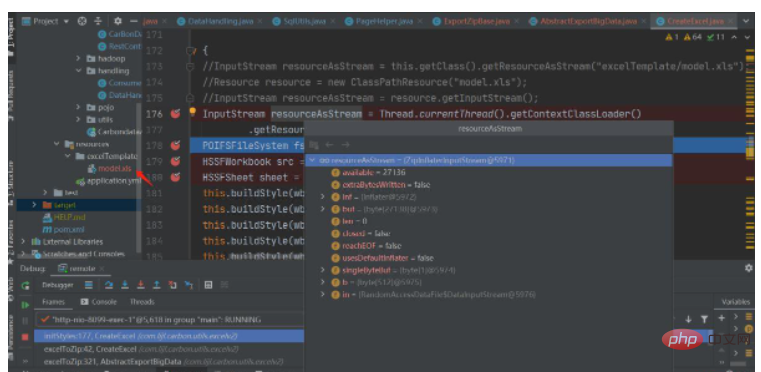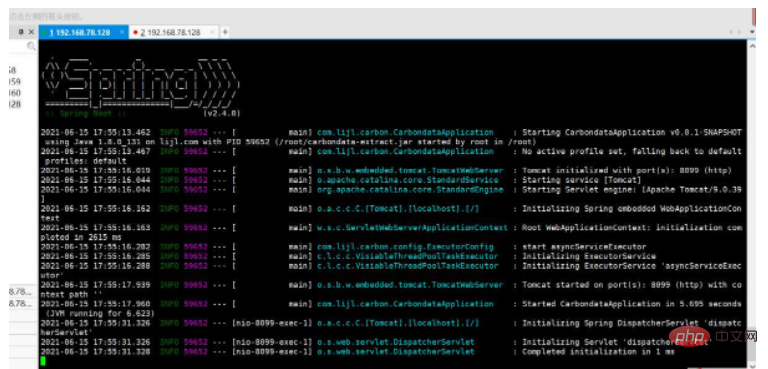How to read files under resources when SpringBoot is deployed to Linux
Background
In daily business development, we usually put some fixed resource files in the resources folder, and obtain the files through relative paths when using them. It seems to be a very simple function
There seem to be some small pitfalls, such as the obtained file content is garbled or the file cannot be read.
Read garbled characters
This is very simple. Specify in the maven plug-in that the files to be obtained later will not be compiled and put into the package as they are
<plugin> <groupid>org.apache.maven.plugins</groupid> <artifactid>maven-resources-plugin</artifactid> <configuration> <nonfilteredfileextensions> <nonfilteredfileextension>sql</nonfilteredfileextension> <nonfilteredfileextension>xlsx</nonfilteredfileextension> <nonfilteredfileextension>xls</nonfilteredfileextension> </nonfilteredfileextensions> </configuration> </plugin>
Read files
This is a small pit, and it took me an hour or two to find the problem. . . . . Despair
First list two absolutely unfeasible methods. The main reason is that there is no problem in the development environment, but it will not work in production
方法一:
File currentFolder = ResourceUtils.getFile("classpath:excelTemplate/model.xls");
方法二:
this.class.getResourceAsStream("excelTemplate/model.xls");The following is a feasible method. But there are some pitfalls. . . . . . This pitfall is purely caused by accident
方法一:
Resource resource = new ClassPathResource("excelTemplate/model.xls");
InputStream resourceAsStream = resource.getInputStream();
方法二:
InputStream resourceAsStream = Thread.currentThread().getContextClassLoader().getResourceAsStream("excelTemplate/model.xls");These two methods are definitely easy to use. Some friends may have reported an error when obtaining the file. If an error also occurs, you can open it locally and try it now to see the file. Is there any damage.
It is definitely helpful to have pictures and the truth

#Don’t misunderstand that the program is indeed running on Linux. In order to verify it, use the development tool Remote Screenshots for easy debugging

The above is the detailed content of How to read files under resources when SpringBoot is deployed to Linux. For more information, please follow other related articles on the PHP Chinese website!

Hot AI Tools

Undresser.AI Undress
AI-powered app for creating realistic nude photos

AI Clothes Remover
Online AI tool for removing clothes from photos.

Undress AI Tool
Undress images for free

Clothoff.io
AI clothes remover

Video Face Swap
Swap faces in any video effortlessly with our completely free AI face swap tool!

Hot Article

Hot Tools

Notepad++7.3.1
Easy-to-use and free code editor

SublimeText3 Chinese version
Chinese version, very easy to use

Zend Studio 13.0.1
Powerful PHP integrated development environment

Dreamweaver CS6
Visual web development tools

SublimeText3 Mac version
God-level code editing software (SublimeText3)

Hot Topics
 1663
1663
 14
14
 1419
1419
 52
52
 1313
1313
 25
25
 1263
1263
 29
29
 1237
1237
 24
24
 Linux Architecture: Unveiling the 5 Basic Components
Apr 20, 2025 am 12:04 AM
Linux Architecture: Unveiling the 5 Basic Components
Apr 20, 2025 am 12:04 AM
The five basic components of the Linux system are: 1. Kernel, 2. System library, 3. System utilities, 4. Graphical user interface, 5. Applications. The kernel manages hardware resources, the system library provides precompiled functions, system utilities are used for system management, the GUI provides visual interaction, and applications use these components to implement functions.
 How to check the warehouse address of git
Apr 17, 2025 pm 01:54 PM
How to check the warehouse address of git
Apr 17, 2025 pm 01:54 PM
To view the Git repository address, perform the following steps: 1. Open the command line and navigate to the repository directory; 2. Run the "git remote -v" command; 3. View the repository name in the output and its corresponding address.
 vscode Previous Next Shortcut Key
Apr 15, 2025 pm 10:51 PM
vscode Previous Next Shortcut Key
Apr 15, 2025 pm 10:51 PM
VS Code One-step/Next step shortcut key usage: One-step (backward): Windows/Linux: Ctrl ←; macOS: Cmd ←Next step (forward): Windows/Linux: Ctrl →; macOS: Cmd →
 What is the main purpose of Linux?
Apr 16, 2025 am 12:19 AM
What is the main purpose of Linux?
Apr 16, 2025 am 12:19 AM
The main uses of Linux include: 1. Server operating system, 2. Embedded system, 3. Desktop operating system, 4. Development and testing environment. Linux excels in these areas, providing stability, security and efficient development tools.
 How to run java code in notepad
Apr 16, 2025 pm 07:39 PM
How to run java code in notepad
Apr 16, 2025 pm 07:39 PM
Although Notepad cannot run Java code directly, it can be achieved by using other tools: using the command line compiler (javac) to generate a bytecode file (filename.class). Use the Java interpreter (java) to interpret bytecode, execute the code, and output the result.
 How to run sublime after writing the code
Apr 16, 2025 am 08:51 AM
How to run sublime after writing the code
Apr 16, 2025 am 08:51 AM
There are six ways to run code in Sublime: through hotkeys, menus, build systems, command lines, set default build systems, and custom build commands, and run individual files/projects by right-clicking on projects/files. The build system availability depends on the installation of Sublime Text.
 laravel installation code
Apr 18, 2025 pm 12:30 PM
laravel installation code
Apr 18, 2025 pm 12:30 PM
To install Laravel, follow these steps in sequence: Install Composer (for macOS/Linux and Windows) Install Laravel Installer Create a new project Start Service Access Application (URL: http://127.0.0.1:8000) Set up the database connection (if required)
 How to use VSCode
Apr 15, 2025 pm 11:21 PM
How to use VSCode
Apr 15, 2025 pm 11:21 PM
Visual Studio Code (VSCode) is a cross-platform, open source and free code editor developed by Microsoft. It is known for its lightweight, scalability and support for a wide range of programming languages. To install VSCode, please visit the official website to download and run the installer. When using VSCode, you can create new projects, edit code, debug code, navigate projects, expand VSCode, and manage settings. VSCode is available for Windows, macOS, and Linux, supports multiple programming languages and provides various extensions through Marketplace. Its advantages include lightweight, scalability, extensive language support, rich features and version




